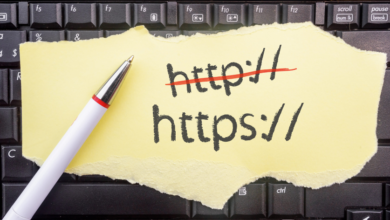https://frontalrevista.com.ar/literatura/leelo-antes-de-verlo/

Lights, camera, read! Have you ever found yourself eagerly anticipating the release of a movie or TV show based on your favorite book? The excitement builds as you imagine seeing your beloved characters come to life on the big screen. But before you dive headfirst into the cinematic experience, there’s one crucial step that should never be overlooked: reading the original source material.
In today’s fast-paced world, it can be tempting to skip straight to watching adaptations without taking the time to indulge in their literary counterparts. However, by doing so, we miss out on a multitude of benefits that reading provides. So join us as we delve into why “leerlo antes de verlo” (reading it before watching it) is not just a suggestion but an essential part of fully immersing ourselves in the magic of storytelling.
The benefits of reading the original source material
When it comes to watching a movie or TV show, many people are quick to skip reading the original source material. However, there are numerous benefits to delving into the world of books before diving into on-screen adaptations.
First and foremost, reading the original source material allows you to fully immerse yourself in the story. Books have a way of capturing emotions and details that can be difficult for movies or TV shows to replicate. By reading the book first, you get an opportunity to build your own mental images and form a personal connection with the characters.
Additionally, reading gives you access to an abundance of additional information that may not make it into the adaptation. Authors often include rich backstories, subplots, and character development that simply cannot be condensed into a two-hour film or limited series. By exploring these extra layers through reading, you gain a deeper understanding of the story and its nuances.
Moreover, experiencing the original source material before watching an adaptation allows you to become an active participant in evaluating how well it has been translated onto screen. You can analyze choices made by directors and producers in adapting certain scenes or changing aspects of characters’ personalities. This critical thinking enhances your overall viewing experience as you compare what was captured from page to screen.
Lastly but certainly not least important is that by prioritizing reading before watching adaptations opens up opportunities for discussions with others who have done so as well! Collaborating with fellow readers adds another dimension when analyzing differences between mediums while sharing perspectives about themes and character arcs.
In conclusion,’ Leelo antes de verlo’ (Read it before seeing) should always be our motto when faced with upcoming adaptations.
The benefits gained from indulging ourselves in original sources far outweigh any shortcuts we might take by jumping straight into on-screen versions!
The impact of adaptations on the original story
Adaptations have the power to breathe new life into beloved stories, bringing them to a wider audience and immersing viewers in captivating worlds. However, it is important to recognize that these adaptations can also have an impact on the original story.
When a book or novel is adapted for the screen, certain changes inevitably occur. Characters may be altered or omitted altogether, plotlines may be condensed or rearranged, and even the tone of the story can shift. While this can sometimes enhance the viewing experience by adding visual elements or streamlining complex narratives, it can also dilute or alter key aspects of the original work.
One of the main challenges faced by filmmakers and showrunners is capturing the essence and depth of a complex literary world within a limited timeframe. This often leads to creative choices that deviate from what readers might expect or remember from their reading experience. Such changes may appeal to some viewers but disappoint others who were hoping for a faithful adaptation.
On one hand, these alterations can provide fresh perspectives and interpretations that make an already familiar story feel new again. On the other hand, they run the risk of alienating fans who cherished specific characters or moments from their reading journey.
Yet despite these potential drawbacks, adaptations also offer unique opportunities for audiences to engage with stories in different ways. Watching an adaptation after reading allows us to compare our own mental images with those presented onscreen – sparking discussions about interpretation and deepening our understanding of narrative choices.
Additionally, watching an adaptation can serve as motivation for reluctant readers to pick up books they might not have otherwise considered. Seeing characters come alive onscreen often ignites curiosity about their origins and encourages further exploration through literature.
In conclusion (without using “In conclusion”!), while adaptations undoubtedly reshape stories in various ways – both positively and negatively – they ultimately contribute to expanding our appreciation for storytelling across different mediums. Whether you choose to read first before watching an adaptation or vice versa, the experience of engaging with a story in multiple formats offers a rich and multi
How reading can enhance your viewing experience
When it comes to watching a movie or TV show, many people might think that reading the original source material is not necessary. After all, why spend time with a book when you can just sit back and enjoy the on-screen adaptation? However, reading before watching can actually enhance your viewing experience in ways you may not expect.
Diving into the pages of a book allows you to fully immerse yourself in the story and its characters. Books often provide more detailed descriptions and inner thoughts of characters that are difficult to capture on screen. By understanding their motivations and emotions better through reading, you can develop a deeper connection with them while watching.
Additionally, books offer an opportunity for imaginative interpretation. When we read a novel or short story, our minds create images and scenarios based on our own unique perspectives. This allows us to bring our imagination into play while watching the adaptation, making it even more engaging and personal.
Furthermore, reading provides context and background information that may be glossed over or omitted entirely in adaptations due to time constraints. You’ll gain valuable insights into the world-building elements such as history, culture, or societal norms which will enrich your understanding of the story’s universe.
Moreover by reading first ,you get one step ahead from spoilers as adaptations sometimes tend deviate from original storyline hence if you have already read then those deviations won’t spoil anything for because knowledge about plot twists makes things much interesting rather than regretting something spoiled .
Lastly,in some cases where movies/series don’t do justice with book ,even if they were great still most of times readers feel unsatisfied so by knowing what was changed will satisfy curiosity whether changes were worth made.
Reading before watching offers numerous benefits – deeper connections with characters,introducing vivid imagery,presenting additional context,and avoiding potential spoilers.
It’s clear that taking the time to read before seeing an adaptation is well worth it.
The next time you’re planning on watching a movie or TV show based on a book, consider picking up the source
Examples of successful book-to-screen adaptations
Examples of successful book-to-screen adaptations have become a common occurrence in the entertainment industry. From classic novels to popular contemporary fiction, many beloved stories have made their way onto our screens with great success. One such example is J.
K. Rowling’s Harry Potter series, which captivated readers worldwide and was later adapted into a highly successful film franchise.
The magic of the books translated seamlessly onto the big screen, allowing fans to see their favorite characters come to life in vivid detail. The intricate world-building and complex plotlines were expertly brought to life by talented actors and filmmakers, creating an immersive experience for both readers and viewers alike.
Another notable example is Stephen King’s “The Shawshank Redemption.” This novella was transformed into a critically acclaimed film that has stood the test of time. The powerful themes and compelling characters from King’s original work resonated with audiences on screen, earning it a spot as one of the greatest films ever made.
Gillian Flynn’s gripping thriller “Gone Girl” also found success as a book-to-screen adaptation. The suspenseful narrative kept readers on edge, but seeing it play out on screen added another layer of tension and intrigue. Rosamund Pike’s haunting portrayal of Amy Dunne earned her critical acclaim and further solidified the impact of this captivating story.
These examples demonstrate how reading the original source material can enhance your viewing experience by providing deeper insights into character motivations, richer storytelling elements, and a heightened emotional connection with the story overall.
The downside of not reading before watching
The downside of not reading before watching a movie or TV show is that you might miss out on the rich and intricate details that are often present in the original source material. Books have the ability to delve deep into characters’ thoughts, feelings, and motivations, providing a level of depth that can be challenging to capture on screen.
Without reading the book first, you may also miss important plot points or subplots that add depth and complexity to the story. Adaptations often need to condense or omit certain elements due to time constraints, leading to a loss of nuance and intricacy.
Another disadvantage of skipping the book is that you may not fully understand or appreciate the choices made by filmmakers during adaptation. Elements such as character changes or plot alterations could confuse viewers who are unfamiliar with the original story.
Furthermore, reading before watching allows for personal interpretation and imagination. When we read a book, our mind creates images and visualizations based on words alone. This imaginative process adds another layer of enjoyment when we watch an adaptation because it allows us to compare our own mental image with what appears on screen.
By not prioritizing reading before viewing, you run the risk of missing out on these enriching experiences and losing some understanding of both literary works and their adaptations. So next time there’s an upcoming film or series based on a beloved book, take some time beforehand to immerse yourself in its pages – you won’t regret it!
Conclusion and recommendations for readers to prioritize reading before viewing
In today’s fast-paced world, it’s easy to get caught up in the excitement of watching our favorite movies or TV shows without even realizing that many of them are adaptations from books. However, taking the time to read the original source material before diving into the on-screen version can greatly enhance your overall viewing experience.
By reading the book first, you have the opportunity to fully immerse yourself in the story and connect with its characters on a deeper level. You can explore their thoughts, emotions, and motivations in a way that is often limited in film or television adaptations. This allows you to form your own mental image of how things should look and unfold before seeing someone else’s interpretation on screen.
Moreover, by reading before watching, you gain insight into details and subplots that may not make it onto the screen due to time constraints or creative choices. It’s like discovering hidden gems within a familiar narrative – little nuggets of information that add depth and richness to your understanding of the story.
Adaptations inevitably bring changes – some minor, others more significant – to accommodate different mediums and audience preferences. While these alterations may be necessary for visual storytelling purposes, they can sometimes dilute or alter important aspects of the original work. By reading beforehand, you’ll have a clear understanding of what has been changed or omitted so that you can appreciate both versions independently.
Reading also exercises your imagination muscles in ways that watching cannot replicate entirely. When we read a book, we create vivid mental images based on descriptions provided by authors; our minds become active participants in shaping every scene and character detail. This imaginative exercise adds an extra layer of engagement when we finally see those scenes brought visually to life on screen.
Countless successful book-to-screen adaptations stand as testament to why reading before watching is beneficial. Take J.




